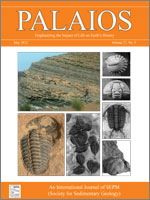Insects are diverse and abundant components of most terrestrial ecosystems today and are well represented in the fossil record with first occurrences in the Early Devonian. Fossil deposits that include exceptionally preserved insect assemblages are found in several different types of Lagerstätten, with their preservation in amber and in lake sediments being of greatest importance. Researchers have used a variety of approaches to study the taphonomy of insects preserved in lacustrine environments and have identified several important variables that contribute to the preservation potential of insects. A combination of insect ecology, morphology, and the depositional setting in which an insect specimen rests influence the preservation potential of insects and ultimately affect the spatial, temporal, and compositional resolution of fossil assemblages. In general, lacustrine insect assemblages experience very little spatial and temporal averaging. Compositional fidelity of assemblages tends to be low, with an overabundance of allochthonous taxa from smaller size classes. In addition, the composition of fossil insect assemblages will be biased depending on the specimen's position within a lake, dependent on both water depth and distance from shore. Focus areas for future research are outlined, as are recommendations for improving field collecting methods and statistical approaches. Finally, the benefits of conducting synthetic studies using global databases and the importance of studying unexceptional deposits are discussed.
BioOne.org will be down briefly for maintenance on 17 December 2024 between 18:00-22:00 Pacific Time US. We apologize for any inconvenience.
How to translate text using browser tools
1 May 2012
EXCEPTIONAL PRESERVATION OF INSECTS IN LACUSTRINE ENVIRONMENTS
DENA M. SMITH
ACCESS THE FULL ARTICLE
It is not available for individual sale.
This article is only available to subscribers.
It is not available for individual sale.
It is not available for individual sale.

PALAIOS
Vol. 27 • No. 5
May 2012
Vol. 27 • No. 5
May 2012




